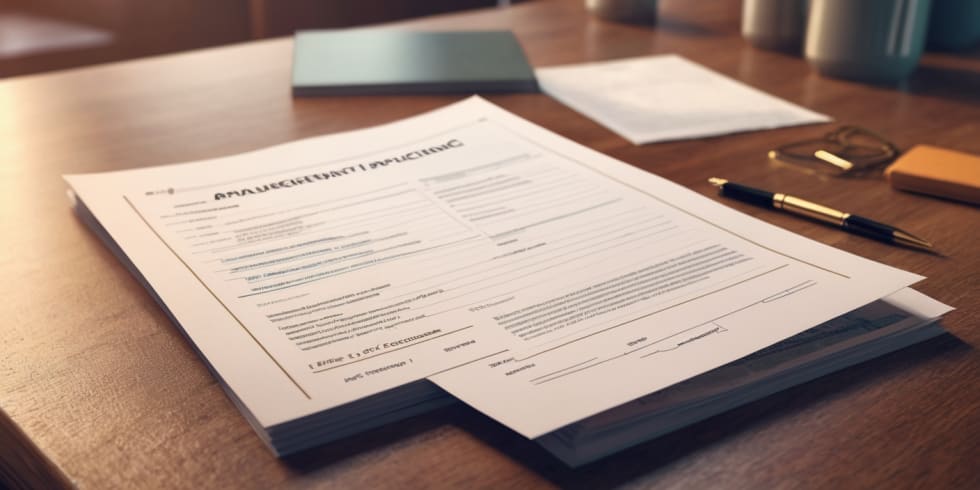Essential Tips for New Renters
Budgeting for Your New Space
Navigating the financial aspect of renting can feel akin to solving a Rubik’s Cube in pitch darkness. Yet, with the right strategy, it becomes a manageable, even enjoyable, puzzle. Introducing the golden rule of budgeting for renters: the 30% guideline. This rule of thumb suggests dedicating no more than 30% of your gross monthly income to cover rent. For instance, with a monthly income of $3,000, your rent should cap at $900, ensuring your living expenses don’t overshadow your financial well-being.
But let’s delve deeper with the 50-20-30 budgeting rule, a method that earmarks 50% of your net income for necessities (including rent), 20% for savings, and the remaining 30% for personal desires. If your net monthly take-home is $2,500, this translates to $1,250 for essential needs, $500 towards savings, and $750 for those personal treats and leisure activities. This balanced approach promotes a financially healthy lifestyle, enabling you to enjoy the present while securing your future.
Finding an apartment that aligns with this budget might seem daunting, akin to resisting a tantalizing slice of cheesecake. Yet, with patience and focused search strategies, it’s entirely achievable. Begin by identifying your must-haves: location, amenities, pet policies, etc. Utilize online tools and apps to sift through potential homes that meet your criteria without straining your finances. Compromise may be necessary, but the victory lies in securing a place that resonates with home within your financial comfort zone.
Armed with these budgeting strategies, you’re well-equipped to embark on your apartment hunting journey with confidence. Whether you’re a budgeting pro or just starting, these insights are your beacon towards a stress-free renting experience, aiming not just for any apartment but a sanctuary where your financial and emotional well-being harmoniously coexist.

Choosing the Right Apartment
Choosing the right first apartment is akin to finding the perfect pair of jeans; it might take some trying on, but when you find the right fit, you just know. So, how do you navigate this journey to ensure you end up in a place that not only suits your budget but your lifestyle too? Let’s dive into the considerations that could make or break your next home sweet home.
Studio vs. one-bedroom vs. two-bedroom: How to choose based on your lifestyle and budget
Deciding between a studio, one-bedroom, or two-bedroom apartment is our first pit stop. If you’re a solo flyer who treasures simplicity and affordability, a studio might just be your jam. It’s cozy, easier to clean, and generally costs less than its more-separated counterparts. On the flip side, one-bedroom apartments offer that delightful door you can shut to the world (or at least to your bed) when entertaining guests. For those craving more space or planning to live with a roommate, a two-bedroom apartment provides ample space and privacy. Remember, it’s not just about the space but how you’ll use it. Will you be hosting dinner parties, need a home office, or simply want a quiet place to come back to after a day’s work? Your lifestyle and budget are the compasses guiding this choice.

Understand The Application Process
Diving into the apartment application process can feel like you’re stepping into a maze without a map. But fear not! We’re here to guide you through with a lantern in hand, highlighting every twist and turn so you can navigate this path with ease and confidence.
A Comprehensive List of Documents You’ll Need
First things first, let’s talk paperwork. The documents you’ll need can vary by landlord, but here’s a universal starter pack to keep in your arsenal:
- Proof of Income: This could be your recent pay stubs, a bank statement, or a tax return that shows you have the dough to cover your rent.
- Photo ID: A driver’s license or passport to prove you are who you say you are.
- Rental Application: Filled out in detail. Don’t leave blanks that could raise eyebrows.
- References: Preferably references from past landlords who can vouch for your stellar tenancy.
- Credit Report: Some landlords might request this, but it’s always good to have your recent credit report handy.
Having these documents at the ready can speed up the application process and show landlords you’re serious and prepared.
Strategies to Make Your Application Shine
Standing out in a competitive rental market requires a bit of strategy. Here are quick tips to ensure your application shines brighter than the rest:
- Personalize Your Application: Attach a brief letter introducing yourself, your hobbies, and why you love the property. It adds a personal touch and helps the landlord remember you.
- Professionalism is Key: Treat your application like a job application. Be polite, punctual for viewings, and follow up with a thank-you email.
- Highlight Stability: Emphasize job stability, a history of responsible renting, or any attributes that make you a low-risk, desirable tenant.
Navigating Credit Scores and the Role of Cosigners
Credit scores can be the Achilles’ heel of many hopeful renters. Here’s what you need to know:
- Understand Your Score: Know your credit score beforehand. A score of 670 or above is generally considered good, but don’t despair if yours is lower.
- Be Transparent: If your credit is less than perfect, be upfront about it. Offer explanations for any blemishes and how you’ve worked to improve your financial situation.
- Consider a Cosigner: A cosigner can be a lifeline if your credit score is holding you back. This is someone who agrees to take on the responsibility of your rent if you’re unable to pay. Choose someone reliable, with a strong credit history, ideally a close family member or friend.
Remember, every renter has been where you are now. With these tips, you’re well on your way to demystifying the application process and stepping into your new home with confidence.

Decoding Your Lease Agreement
Ah, the lease agreement – that document filled with legalese that can make even the bravest souls tremble. But fear not! We’re here to decode this cryptic manuscript and turn you into a lease agreement wizard. So grab your magic wand (or just your reading glasses), and let’s dive in.
Unpacking the Key Components of a Lease Agreement
Q: What exactly is a lease agreement?
A: Think of a lease agreement as a rulebook for your tenancy. It outlines the dos and don’ts, your landlord’s obligations, and your commitments as a tenant. Key components include the duration of your lease, monthly rent, security deposit details, policies on pets and subletting, and conditions for termination.
Q: How long does a typical lease last?
A: Most leases have a term of 12 months, but shorter or longer periods can be negotiated based on your needs and what the landlord is willing to offer.
Q: What’s the deal with rent increases?
A: Your lease should specify if and when rent can be increased, including how much notice you must receive before the hike takes effect. Some areas have rent control laws, so it’s wise to check local regulations.
Q: Can I have pets?
A: This varies by lease. Some landlords allow pets with specific restrictions and possibly an additional deposit. Always check your lease and get any pet agreements in writing.
Q: What happens if I need to move out early?
A: Look for the lease’s termination clause, which outlines the process for ending your lease early, including any fees or notice requirements.
Security Deposits Demystified
Ah, the security deposit – the cause of many a renter’s anxiety. Here’s how to ensure you and your deposit have a happy reunion at the end of your lease.
Q: How much can my landlord charge for a security deposit?
A: This varies by state, but it’s commonly one month’s rent. Some states allow for more, especially if you have pets.
Q: What can the security deposit be used for?
A: Your landlord can use it to cover unpaid rent, repair damages beyond normal wear and tear, or clean the apartment if it’s not left in the condition it was found.
Q: How do I ensure I get my full deposit back?
A: Document the condition of the apartment when you move in and out with photos or videos. Report any damages or issues during your tenancy. And, of course, leave your apartment in tip-top shape when you move out.
Remember, understanding your lease agreement is crucial to a harmonious renting experience. It’s not just about having a roof over your head but about knowing your rights and responsibilities as a tenant. So, wield this knowledge with confidence, and may your renting journey be smooth and dispute-free!

Making Your Apartment a Home
Transforming a rental apartment into a space that screams “you” is an exciting challenge, especially when you’re navigating the world of non-permanent, damage-free decor. Here are fun and innovative ways to infuse your personality into your new place without risking your security deposit.
Personalizing Your Rental Space Without Leaving a Mark
The golden rule of rental decor is to leave no trace. Thankfully, today’s market is brimming with products designed for temporary use but permanent impact. Removable wallpaper has revolutionized the way renters can add pizzazz to their walls. Available in an array of patterns and colors, it’s a surefire way to create an accent wall that pops or a full-room transformation that’s as easy to remove as it is to apply.
For hanging art, forget nails and embrace the world of adhesive hooks and strips. Brands like Command offer a variety of sizes and styles, ensuring you can hang anything from lightweight posters to framed artwork without leaving a single mark. The key is to follow the removal instructions carefully to avoid any paint mishaps.
Ingenious Storage Solutions for Small Spaces
In a small rental, every inch counts. That’s where clever storage solutions come in. Over-the-door organizers aren’t just for shoes; they’re perfect for everything from pantry items to bathroom essentials. Also, consider multi-functional furniture such as ottomans with storage or a bed frame with drawers underneath. These pieces provide the extra storage you crave while keeping your space clutter-free.
Floating shelves are another game-changer. They take advantage of vertical space, offering storage and display areas without sacrificing precious square footage. Plus, they’re relatively easy to install and remove, with minimal wall impact.
DIY Decor Hacks to Transform Your Rental into a Cozy Haven
Lighting can dramatically change the feel of a space. Swap out harsh overhead lights with softer, warmer bulbs, or add table and floor lamps for a cozy ambiance. If you’re feeling crafty, DIY your lampshades with fabric or paint for a custom look.
Plants are another excellent way to breathe life into your apartment. They not only improve air quality but also add a vibrant touch of nature. If you’re worried about upkeep, opt for low-maintenance varieties like succulents or faux plants that look surprisingly real.
Lastly, throw blankets and cushions are your best friends. They can add color, texture, and warmth to your living space, making it feel welcoming and lived-in. The best part? They’re completely portable and can change with your mood or the season.
We’d love to see how you’ve transformed your rental into a cozy haven. Share your before-and-after photos and DIY decor hacks with us. Let’s inspire each other to create spaces that feel like home, no matter how temporary they might be.

Living with Roommates
Living harmoniously with roommates is much like choreographing a dance; it requires understanding, cooperation, and sometimes a bit of compromise. Here are some tips to ensure that your shared living experience is as smooth and enjoyable as possible.
Laying the Groundwork for a Positive Co-living Experience: Setting Expectations and Boundaries
The key to a harmonious co-living situation starts with clear communication. Sit down with your roommates early on to discuss each other’s expectations and boundaries. Topics to cover might include quiet hours, guest policies, cleanliness standards, and shared responsibilities. Consider creating a “roommate agreement” as a reference for these discussions—it might sound formal, but it can prevent misunderstandings down the line.
Efficiently Managing Shared Expenses with App Recommendations
Money matters can often lead to tension among roommates. To keep financial peace, use apps like Splitwise or Venmo to track and split expenses transparently. These tools can help manage everything from rent and utilities to grocery bills and shared household items, ensuring everyone pays their fair share without the awkwardness of having to constantly remind each other.
Resolving Conflicts with Grace and Ensuring a Harmonious Living Environment
Even with the best intentions, conflicts may arise. When they do, address them directly and respectfully. Active listening is crucial—try to understand your roommate’s perspective before responding. If necessary, revisit your roommate agreement for guidance or consider mediation for more serious disputes. Remember, the goal is to maintain a peaceful and positive living environment for all.
By setting clear expectations, managing shared expenses efficiently, and dealing with conflicts gracefully, you can create a co-living experience that’s not just bearable, but actually enjoyable. After all, your home should be your sanctuary, not a source of stress.

Maintenance Tips Every Renter Should Know
Mastering basic repairs and upkeep in your rental can be a game-changer, not just for your wallet but for your overall living experience. Think of it as being the captain of your own ship; knowing how to navigate minor repairs can keep you sailing smoothly. Start with the basics like unclogging drains, resetting your circuit breaker, or fixing a leaky faucet. Plenty of online tutorials and videos can guide you through these processes step-by-step. Remember, YouTube is your friend here – a treasure trove of DIY repair videos awaits to turn you into a handy-renter in no time.
When and how to communicate maintenance issues to your landlord is crucial. Not every repair is your responsibility, and recognizing when to call in the pros is key. For significant issues beyond your control (think heating problems, electrical issues, or structural repairs), reach out to your landlord or property manager ASAP. Be clear and concise in your communication, documenting the issue with photos and a written description. And always keep a record of your communication for future reference. It’s not just about getting the problem fixed; it’s about advocating for your right to a safe and habitable living environment.
Lastly, a tidy home is indeed a happy home. Keeping your rental spotless isn’t just about aesthetics; it’s about creating a space where you love to live. Invest in storage solutions that maximize space and minimize clutter. Think vertical with shelves, use furniture that doubles as storage, and embrace the power of baskets and bins. Regular cleaning schedules can also work wonders, turning upkeep into a manageable routine rather than a daunting task. And let’s not forget the magic of decluttering; sometimes, less really is more.
Remember, your rental is more than just a temporary spot—it’s your home. By mastering simple repairs, communicating effectively with your landlord, and keeping your space organized and tidy, you ensure that your home is a place of comfort, safety, and personal pride.

FAQs
FAQs
Got burning questions about renting? You’re not alone! Let’s tackle some of the most common queries from new renters, covering everything from budgeting and decorating to roommates and maintenance.
Q: How much of my income should go towards rent?
A: As a general rule of thumb, aim to spend no more than 30% of your gross monthly income on rent. This keeps your housing costs manageable and leaves room in your budget for savings, expenses, and a bit of fun.
Q: Can I decorate my rental without losing my security deposit?
A: Absolutely! Focus on temporary touches like removable wallpaper, adhesive hooks for art, and furniture that adds character without making permanent changes. Get creative with lighting and textiles to cozy up the space.
Q: How do I handle roommate conflicts?
A: Communication is key. Address issues directly and respectfully as soon as they arise. Setting clear expectations and having a roommate agreement can also help prevent conflicts. If disagreements persist, consider mediation to find a resolution.
Q: What basic maintenance should I know how to do?
A: Every renter should know how to unclog a drain, change a lightbulb, reset a circuit breaker, and stop a running toilet. These simple fixes can save you time, money, and a call to the landlord. For anything beyond basic repairs, contact your landlord.
Q: How can I make my rental feel more like home?
A: Personalize your space with items that reflect your style and make you happy. Plants, photos, cozy throws, and unique decor can transform any rental into a warm, inviting home. Remember, it’s the personal touches that truly make a space your own.
Q: What should I do if my landlord isn’t responsive to maintenance requests?
A: Document all communication with your landlord regarding the issue. If they remain unresponsive, check your lease agreement and local tenant rights laws for the next steps. In some cases, you may need to seek legal advice.
Eager to learn more? Dive deeper into the renting experience by subscribing for more guides and tips. Stay connected with us on social platforms for the latest in rental living. Your journey to becoming a savvy renter starts here!




